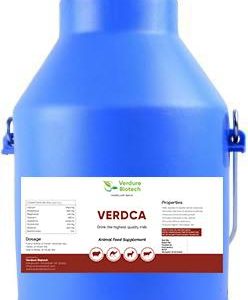Calcium and phosphorus also play important roles in other bodily functions. A decrease in either or both can cause a decrease in weight gain and/or a decrease in efficiency of gain. During lactation, low amounts of either will reduce milk production. Most forages are low in phosphorus, particularly late in the growing season. Cattle are more likely to be phosphorus- deficient during the winter, when they often subsist on dry forages.Sodium and chlorine (salt) provide for the proper function of the nervous and muscular systems. They help regulate body pH and the amount of water retained in the body.Grass tetany can usually be prevented by feeding cattle a mineral mixture containing magnesium oxide. A mineral mixture containing 10 to 14 percent magnesium consumed at 4 ounces per day should provide adequate magnesium.Potassium functions in acid-base balance, osmotic pressure and the amount of water retained in the body.Sulfur is a part of the essential amino acids methionine and cystine, which make up protein. A sulfur deficiency in beef cattle diets is not likely to occur under normal feeding conditions. Cobalt functions as a component of vitamin B-12, which is synthesized in the rumen by bacteria. The primary deficiency symptom is loss of appetite and poor growth. Copper is an important component of many enzyme systems essential for normal growth and development. Deficiency signs include reduced fertility, depressed immunity and reduced pigmentation of hair (black hair changes to red). Iron is primarily required for the formation of hemoglobin. Deficiency symptoms include anemia, depressed immunity and decreased weight gains. Iron deficiency is rarely observed in grazing cattle. Manganese is required for normal reproduction, and fetal and udder development. Selenium can be deficient in some areas of Georgia. Selenium deficiency causes white muscle disease (similar to muscular dystrophy) in newborn calves. Selenium deficiency can also cause calves to be weak at birth and increase their susceptibility to calfhood diseases like scours.Zinc is a component of many enzymes and is important for immunity, male reproduction, and skin and hoof health.
Vitamin A can be added to a mineral mix in a stabilized form to prevent oxidation. The minimum amount should be approximately 120,000 International Units (IU) of vitamin A per pound of mineral. Vitamin A can also be added to the grain mixture to provide 15,000 to 30,000 IU per head per day, depending on individual requirements. Vitamin D deficiency are similar to a calcium or phosphorus deficiency. Most cattle exposed to direct sunlight synthesize enough vitamin D, but cattle in a covered confinement feedlot may need supplemental vitamin D.Vitamin E can be helpful for short-term periods of stress that may occur when calves are co- mingled and transported at weaning.
Properties:
- Provides major minerals to complement pasture or hay forage programs for performance.
- Provides supplemental magnesium when grazing pastures treated with organic matter.
- Aids in proper fetal development, breeding success and immune response.
- For control of active infection of anaplasmosis
- For control of bacterial pneumonia with shipping fever complex
- Prevents lumping and protects nutrients under high moisture condition
Dosage
Cow, Buffalo and Horses : 50-60 gm per day Goat/Sheep: 20- 25 gm per day
Presentation
1 Kg, 5 Kg, 10 Kg and 25 Kg






